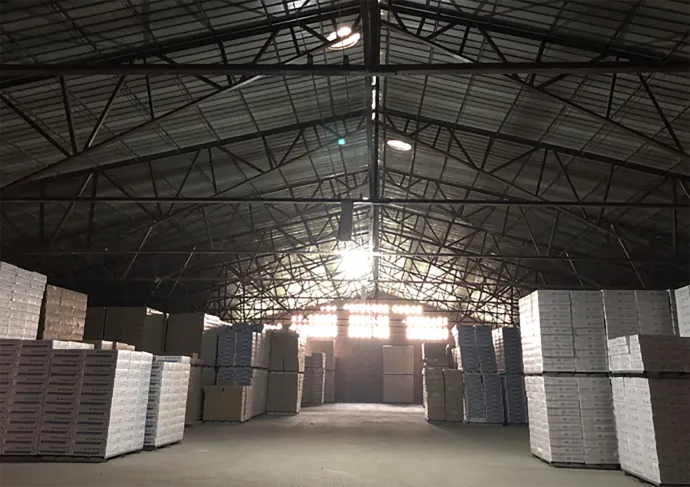Nov . 24, 2024 21:38 Back to list
Exploring the Innovations in T Grid Ceiling Design and Installation Techniques
The Significance of T-Grid Ceilings in Modern Architecture
The T-grid ceiling system, a popular choice in contemporary architecture and interior design, represents a practical yet aesthetically pleasing solution for various settings. Whether in commercial spaces, offices, or even residential buildings, T-grid ceilings, also known as suspended or drop ceilings, have revolutionized the way spaces are designed and utilized.
What is a T-Grid Ceiling?
A T-grid ceiling consists of a framework made from metal or other materials that forms a grid-like structure. This grid is suspended from the main ceiling, allowing for a space where tiles or panels can be installed. The T in T-grid refers to the shape of the grid elements, creating a sequence of T-shaped intersections that support the lightweight ceiling tiles.
The primary purpose of a T-grid ceiling is to conceal ductwork, plumbing, electrical wiring, and other infrastructure elements, providing a clean and polished look. Furthermore, the ceiling tiles can be easily removed, granting access to these components for maintenance or upgrades. This flexibility makes T-grid ceilings an ideal choice for commercial environments where adaptability is key.
Benefits of T-Grid Ceilings
1. Aesthetic Appeal One of the most significant advantages of T-grid ceilings is their ability to enhance the visual appeal of a space. With a variety of tile designs, colors, and textures available, architects and designers can create customized looks that fit their specific themes and branding. Whether aiming for a sleek modern office or a cozy home environment, T-grid ceilings facilitate endless design possibilities.
t grid ceiling

2. Acoustic Performance Acoustic tiles are often used in T-grid systems, which effectively absorb sound and reduce noise pollution. This makes T-grid ceilings particularly beneficial in settings such as schools, hospitals, and offices where noise control is crucial. By improving acoustics, these ceilings contribute to a more productive and comfortable environment.
3. Energy Efficiency T-grid ceilings can also contribute to energy efficiency. Many ceiling tiles are designed to reflect light, which can help reduce energy costs associated with lighting. Additionally, the space created by a suspended ceiling can serve as a buffer zone, helping to insulate the room. This can be particularly valuable in commercial settings where energy consumption is a major concern.
4. Easy Installation and Maintenance One of the top selling points for T-grid ceilings is the straightforward installation process. The grid system can be quickly assembled, and the lightweight nature of the tiles allows for easy handling. This is particularly advantageous in commercial projects where time is money. Moreover, maintenance is simplified, as individual tiles can be replaced without needing to dismantle the entire system.
Conclusion
In a time where functionality and style must go hand-in-hand, T-grid ceilings stand out as a flexible and practical solution in modern construction. Their ability to hide unsightly infrastructure while contributing to the overall aesthetic of the space makes them a desirable choice across various applications. As architects and designers continue to push the boundaries of creativity in building design, the T-grid ceiling system will undoubtedly remain a staple in achieving both form and function.
Ultimately, whether you are designing a new office layout or refurbishing an existing space, considering a T-grid ceiling can add significant value and appeal. For many, these ceilings are not merely a construction component but rather an integral part of creating a harmonious and efficient environment. As we move forward into a more design-conscious world, T-grid ceilings will surely retain their place as a preferred choice in architectural endeavors.
-
Durable Ceiling T Grid Systems | Easy InstallationNewsAug.29,2025
-
PVC Gypsum Ceiling: Durable, Laminated Tiles for Modern SpacesNewsAug.28,2025
-
Pvc Gypsum Ceiling Is DurableNewsAug.21,2025
-
Mineral Fiber Board Is DurableNewsAug.21,2025
-
Ceiling Tile Clip Reusable DesignNewsAug.21,2025
-
Ceiling T Grid Modular DesignNewsAug.21,2025







